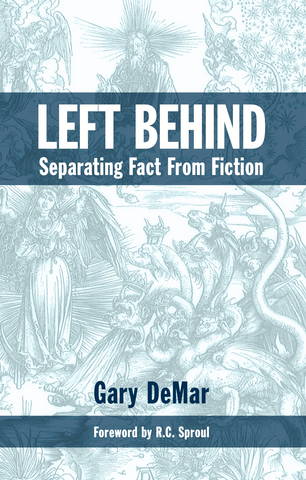Gary interacts with Ron Rhodes new book, Bible Prophecy Under Siege.
In his best-selling book Misquoting Jesus, New Testament critic and skeptic Bart Ehrman, who is the James A. Gray Distinguished Professor of Religion at the University of North Carolina at Chapel Hill, describes how he struggled to reconcile what he had been taught about the inerrancy of the Bible with what he believed to be predictive errors made by Jesus. His trek down the road toward skepticism and unbelief began with what he describes as “one of the most popular books on campus” that was being read while he was a student at Moody Bible Institute in the 1970s, Hal “Lindsay’s [sic] apocalyptic blueprint for our future, The Late Great Planet Earth.” Ehrman writes that he “was particularly struck by the ‘when’” of Lindsey’s prophetic outline of Matthew 24.
Ehrman writes that “this message proved completely compelling to us. It may seem odd now—given the circumstances that 1988 has come and gone, with no Armageddon—but, on the other hand, there are millions of Christians who still believe that the Bible can be read literally as completely inspired in its predictions of what is soon to happen to bring history as we know it to a close.” Instead of questioning the exegetical work of Lindsey and other prophecy writers, Ehrman rejects the authority of the Bible. This is akin to rejecting the study of biology because nearly all scientists once believed in spontaneous generation.
Ehrman isn’t the first person to point out the obvious problems related to Lindsey’s predictions, but it’s somewhat troubling that as a noted New Testament scholar Ehrman made numerous textual mistakes of his own. First, he spelled Lindsey’s name as “Lindsay” (pages 12, 110). In an earlier printing, Ehrman refers to the “Timothy LeHaye [sic] and Philip [sic] Jenkins series Left Behind” as well as another mistaken spelling of LaHaye as “LaHay” (pages 12, 110). It’s LaHaye and Jerry Jenkins. I have more than a dozen books written by Tim LaHaye in my library, one with a publication date of 1972, and not one of them uses the name “Timothy.” These mistakes do not in themselves nullify Ehrman’s arguments (all writers make mistakes), but they do show carelessness with original sources from someone who makes a point of studying documents for accuracy. It’s ironic that so many obvious typographical errors are prominently displayed in a book with the title Misquoting Jesus, and certainly by the eleventh printing these obvious typographical mistakes should have been corrected.
Second, as the chairman of the Department of Religious Studies, and someone who is described as “an authority on the history of the New Testament, the early church, and the life of Jesus,” Ehrman should know that the interpretation made popular by Lindsey, LaHaye, and others has a recent history when compared to the great Bible expositors of the past. Eusebius outlines the preterist (fulfillment) interpretation of the Olivet Discourse in his Ecclesiastical History and Proof of the Gospel, both written in the fourth century. Ehrman seems oblivious to the preterist interpretation of the Olivet Discourse. A “preterist” states that Jesus, in answering His disciples’ questions about the destruction of the temple and the “end of the age” (Matt. 24:1-3), was referring to His coming in judgment against Jerusalem before that first-century generation passed away (24:34). So when Jesus said, “this generation will not pass away until all these things take place,” He had that generation in view.
Using Lindsey and LaHaye as New Testament authorities, as Ehrman does, is a sad commentary on the state of Christian and liberal scholarship. But Ehrman is simply “following the money” by pointing out that it seems that a majority of evangelicals believe LaHaye based on the millions of copies of Left Behind that have been sold since 1995. It’s a shame that this type of prophetic nonsense is continually promoted by Christian publishers that know better and Christians in general who should know better. Today’s end-time preoccupied church and those who make millions of dollars off the nonsense of these prophetic novels and their supposed non-fiction counterparts are giving aid and comfort to the enemies of the gospel.

Left Behind: Separating Fact from Fiction
What difference does it make what we believe about the end times anyway? DeMar addresses that question, showing how our point-of-view regarding end-times prophecies affects the way we live each day. In addition, DeMar answers skeptics who use failed end-times predictions to disprove the Bible. Giving us a different perspective on the end times, this approach to the Bible could revolutionize the life of the church.
Buy NowGary interacts with Ron Rhodes new book, Bible Prophecy Under Siege. While Rhodes deals with the preterist view a bit in the book, it is really nothing more than a rehash of everything he has already written promoting the pretribulational rapture and the dispensational hermeneutic.

